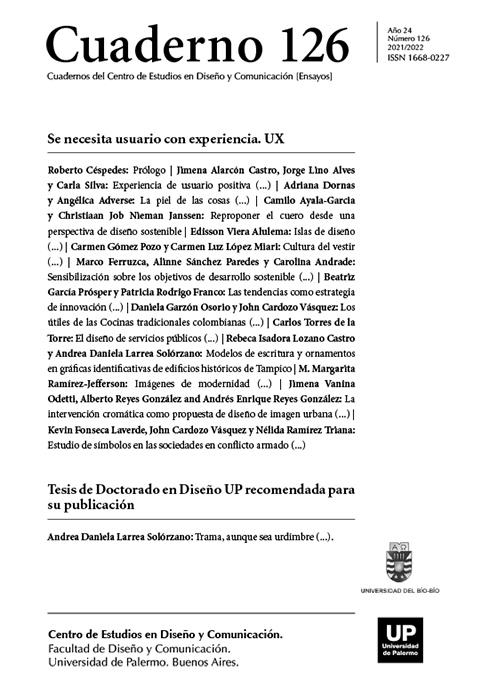Modelos de escritura y ornamentos en gráficas identificativas de edificios históricos de Tampico
Abstract
The city of Tampico in Mexico is an industrial and commercial port marked by its extraction from oil fields at the beginning of the 20th century (1911-1938). Its history was described by American, English and Dutch foreigners who belonged to the oil industry, with lifestyles away from the local that were represented in the architectural style built in houses and multi-family buildings. These structures are part of the culturally and communicationally materialized history through inscriptions, writing models (Gray, 1960) or graphic symbols on their facades as identification, which we call historical identification graphics. The design objects represent the multicultural historical local color of that part of the world full of ornamentation with figurative forms, such as: acanthus leaves in the decoration of national roots, authentic graphic styles, use of proportions in high and low relief, as well as handling of construction materials of the time (concrete, brick, granite, among others). This research presents some of the results obtained from the morphological and symbolic study of the ornamental elements present in these cultural design objects, as a reflection of their stylistic evolution during the s. XIX - s. XX. The interpretation of these graphic constructions suggests an order, a balance, a texture, a rhythm, a symmetry, a formal coherence of the historical composition represented in its architectural materiality.
References
.
Los autores/as que publiquen en esta revista ceden los derechos de autor y de publicación a "Cuadernos del Centro de Estudios de Diseño y Comunicación", Aceptando el registro de su trabajo bajo una licencia de atribución de Creative Commons, que permite a terceros utilizar lo publicado siempre que de el crédito pertinente a los autores y a esta revista.


